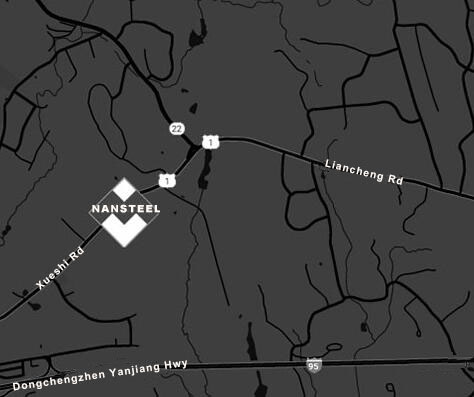Galvanized steel pipes and angle steel are two highly visible metal profiles in industrial manufacturing, construction, and municipal infrastructure. While they may appear to be similar steel products, their structural forms and processing techniques lead to vastly different performance, applicable scenarios, and costs. Many people fall into the trap of choosing based on intuition, either impacting project quality due to insufficient performance or paying a premium for unnecessary features. This article will provide an in-depth analysis of performance characteristics, price differences, and pros and cons to help you accurately match your needs and choose the best value for money solution.
Product Materials
Galvanized Steel Pipe:
The base material is carbon steel, coated with a zinc layer, providing excellent corrosion resistance.
This can be hot-dip galvanized or electro-galvanized, with the former offering greater corrosion resistance.
Angle Steel:
Usually made of carbon steel, uncoated, the exposed steel is susceptible to oxidation.
Corrosion resistance can be enhanced through post-treatment methods such as spray coating or hot-dip galvanizing.
Product Price
Galvanized Steel Pipe:
The cost is slightly higher than that of ordinary angle steel, especially for hot-dip galvanized products.
The price per unit weight is affected by the thickness of the zinc coating and the pipe diameter.
Angle Steel:
The raw material cost is low, the production process is simple, and the overall price is relatively economical.
If anti-corrosion treatment is required, the overall cost will increase.

Product Applications
Galvanized Steel Pipe:
Commonly used for water supply and drainage pipes, guardrails, scaffolding, agricultural greenhouses, etc.
Suitable for applications requiring high corrosion resistance.
Angle Steel:
Mostly used for structural support, metal frames, towers, power equipment foundations, etc.
Suitable for connectors and supports, offering high flexibility and wide adaptability.
Product Maintenance
Galvanized Steel Pipe:
The zinc coating is self-healing and generally requires no additional maintenance.
Long service life, with outdoor use lasting over ten years.
Angle Steel:
Susceptible to rust, requiring regular application of anti-rust paint or anti-corrosion treatment.
Maintenance costs are higher when used in humid or corrosive environments.
Conclusion
Choosing between galvanized steel pipe and angle steel is essentially a balancing act between performance requirements, budget, and maintenance costs:
If the environment is humid, requires fluid transport, or requires long-term use, galvanized steel pipe is preferred (higher upfront cost, less maintenance).
If the application is for static structural support in a dry environment and the budget is limited, angle steel (especially galvanized angle steel) is more cost-effective.
For special needs: Choose galvanized steel pipe for weight-sensitive applications, and angle steel for special-shaped frames (easier to process).
Read more: The Difference between Angle Steel and Channel Steel
Product Materials
Galvanized Steel Pipe:
The base material is carbon steel, coated with a zinc layer, providing excellent corrosion resistance.
This can be hot-dip galvanized or electro-galvanized, with the former offering greater corrosion resistance.
Angle Steel:
Usually made of carbon steel, uncoated, the exposed steel is susceptible to oxidation.
Corrosion resistance can be enhanced through post-treatment methods such as spray coating or hot-dip galvanizing.
Product Price
Galvanized Steel Pipe:
The cost is slightly higher than that of ordinary angle steel, especially for hot-dip galvanized products.
The price per unit weight is affected by the thickness of the zinc coating and the pipe diameter.
Angle Steel:
The raw material cost is low, the production process is simple, and the overall price is relatively economical.
If anti-corrosion treatment is required, the overall cost will increase.

Product Applications
Galvanized Steel Pipe:
Commonly used for water supply and drainage pipes, guardrails, scaffolding, agricultural greenhouses, etc.
Suitable for applications requiring high corrosion resistance.
Angle Steel:
Mostly used for structural support, metal frames, towers, power equipment foundations, etc.
Suitable for connectors and supports, offering high flexibility and wide adaptability.
Product Maintenance
Galvanized Steel Pipe:
The zinc coating is self-healing and generally requires no additional maintenance.
Long service life, with outdoor use lasting over ten years.
Angle Steel:
Susceptible to rust, requiring regular application of anti-rust paint or anti-corrosion treatment.
Maintenance costs are higher when used in humid or corrosive environments.
| Comparison items | Galvanized Steel Pipe | Angle Steel | ||||
| Anti-corrosion properties | Excellent(galvanized protection) | Poor(needs post-processing) | ||||
| Price | Slightly higher | Relatively economical | ||||
| Application scenario | Fluid transportation, fencing, protection, etc. | Structural supports, connections, frames, etc. | ||||
| Maintenance difficulty | Low | high |
Conclusion
Choosing between galvanized steel pipe and angle steel is essentially a balancing act between performance requirements, budget, and maintenance costs:
If the environment is humid, requires fluid transport, or requires long-term use, galvanized steel pipe is preferred (higher upfront cost, less maintenance).
If the application is for static structural support in a dry environment and the budget is limited, angle steel (especially galvanized angle steel) is more cost-effective.
For special needs: Choose galvanized steel pipe for weight-sensitive applications, and angle steel for special-shaped frames (easier to process).
Read more: The Difference between Angle Steel and Channel Steel









